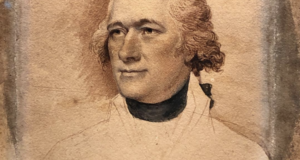Mr. Justice Bielby of the Ontario Superior Court of Justice in Guelph has confirmed that the Limitations Act, 2002 means what it says.
In Slack v. Bednar, the plaintiff suffered a spinal fracture in a ski accident and required surgery. The accident occurred on March 18, 2006 surgery was performed nine days later on March 27. During the course of the surgery, there was an accidental instrument slip. The operating physician, Dr. Bednar, advised the plaintiff of the accident the following day. On September 28, 2006, Dr. Bednar delivered copies of his clinical notes and records to the plaintiff’s lawyer, which naturally contained the operative report and a summary of the accidental slip.
The plaintiff immediately recognized that he had some weakness as a result of the surgical accident. He also began to suffer from weakness in his extremities along with bowel and bladder issues, but was unsure whether these were caused by the initial injury or the surgery.
The plaintiff brought an action against Talisman Mountain Resort Ltd., the owner/occupier of the premises where he was injured, but did not bring a medical malpractice claim against Dr. Bednar. By his own admission, he “never wanted” to sue Dr. Bednar. The plaintiff sat on his hands for over four years finally obtaining an expert report concerning Dr. Bednar’s negligence in early 2011. On March 14, 2011, the plaintiff finally sued Dr. Bednar.
Dr. Bednar brought a motion for summary judgment on the basis that the claim had been brought well outside the two-year limitation period prescribed by the Limitations Act, 2002. The Court agreed. Bielby J. carefully reviewed the text of the Act and the relevant caselaw. He noted that a plaintiff is not required to know the exact extent of the loss for the cause of action to crystalize and that the plaintiff in the instant case knew from the beginning that Dr. Bednar had made a mistake and had caused further damage. Even if one could argue that the material facts were not truly “discoverable” until the plaintiff had commissioned the opinion of an independent expert, the plaintiff demonstrated a complete lack of due diligence, having failed to investigate his potential claim against Dr. Bednar until 2011.
Beilby J.’s decision offers a principled interpretation of the Limitations Act, 2002. One of the clear purposes of a fixed limitation period is to provide potential defendants with “certainty and finality in managing their affairs” (see the Court of Appeal’s decision in Joseph v. Paramount Canada’s Wonderland, 2008 ONCA 469, para. 6 (CanLII)). To put it another way, people must be able to get on with their lives without fear that they will one day be sued for something that occurred many years earlier. For this reason, the two-year limitation period must be applied with rigour and without discretion, subject of course to persuasive evidence adduced by the plaintiff that the claim could not reasonably have been discovered at the time of the incident itself.
The decision in Slack is also a welcome interpretation of the summary judgment provisions in the Rules of Civil Procedure. Motion judges were previously reluctant to grant summary judgment despite the amendments to Rule 20 in 2010, which clearly provided judges with greater latitude to grant summary judgment and even permitted them to hear oral evidence. The Supreme Court of Canada recently confirmed in Hryniak v, Mauldin, 2014 SCC 7 that the amendments to Rule 20 have increased the availability of summary judgment. The decision in Slack v. Bednar is an early indication that the lower courts are following suit.
 Advocates for the Rule of Law
Advocates for the Rule of Law



